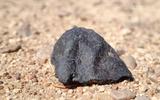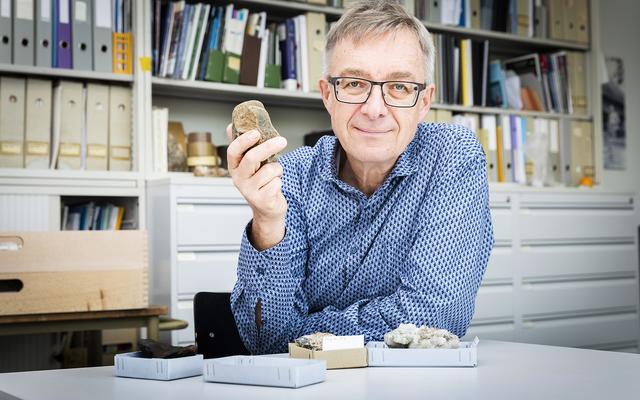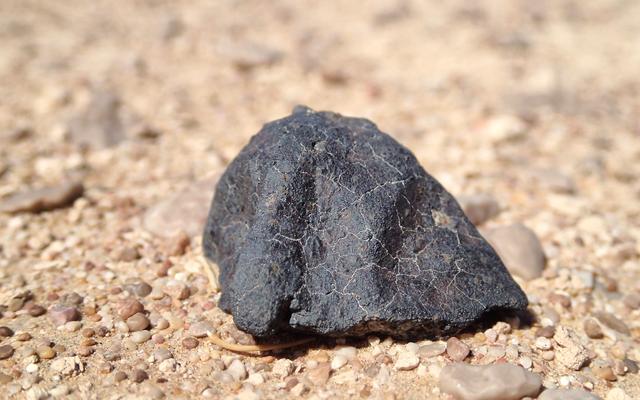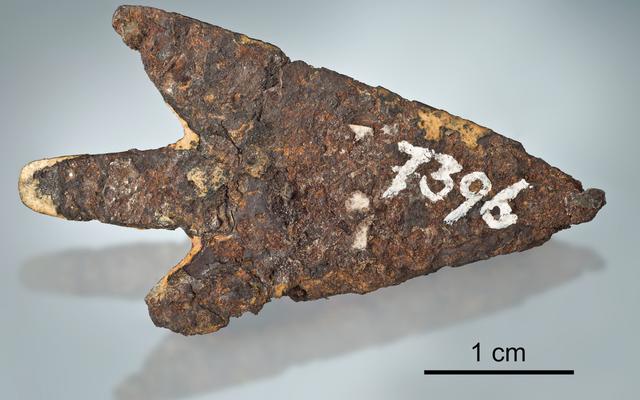After more than 20 years of joint Omani-Swiss meteorite research, a new collaboration with the Global Fireball Network of Curtin University, Australia, was started in 2021. This permitted to install four sky observation cameras in the central desert of Oman, an excellent location for the identification of freshly fallen meteorites. Each night, the sky is observed for large shooting stars called "fireballs". The trajectory and the location of fall can be reconstructed for bright fireballs, registered by at least two of the cameras.
In 2022, the first year of operation, the camera system recorded several fireballs. Two of these events had a high probability that meteorites were not completely burnt up in the atmosphere and reached the ground. The two target areas, more than 500 km apart, were searched for meteorites by the Omani-Swiss team in January-February 2023.
"Al-Khadhaf" - The first fallen meteorite
Two small and fresh-looking meteorites of 8.2 and 13.8 grams (total mass is 22.0 g) were recovered near Al-Khadhaf in the Shisr area in the southwest of Oman, 336 days after a fireball observation of March 8, 2022. The link between the observed fireball and the recovered meteorites was proven by the detection of characteristic short-lived radioactive isotopes, in particular manganese-54 and sodium-22. These isotopes were measured using the highly-sensitive gamma ray spectrometer GeMSE, which is situated in a tunnel inside a Swiss mountain to shield it from cosmic rays. The two individual pieces were further investigated using optical and electron microscopy and electron microprobe analysis. The results were recently submitted to the Meteoritical Society and the meteorite is now officially classified as "H5-6 (breccia)". In line with its fall location, the meteorite was officially named "Al-Khadhaf". The fall of this meteorite was tracked by two cameras situated at a distance of 200 and 250 km from the find location. The finds were made within less than 100 m of the calculated locations. The calculated orbit showed that the meteorite derived from the inner part of the asteroid belt which is located between Mars and Jupiter.
Al-Khadhaf is not only the first observed fall recovered in the Sultanate of Oman but also the smallest mass recovered from the about 40 camera-observed cases known worldwide. It is a success for the project demonstrating that the prevailing search conditions in the flat desert parts are excellent, enabling the recovery of even small meteorites with relatively few cameras.
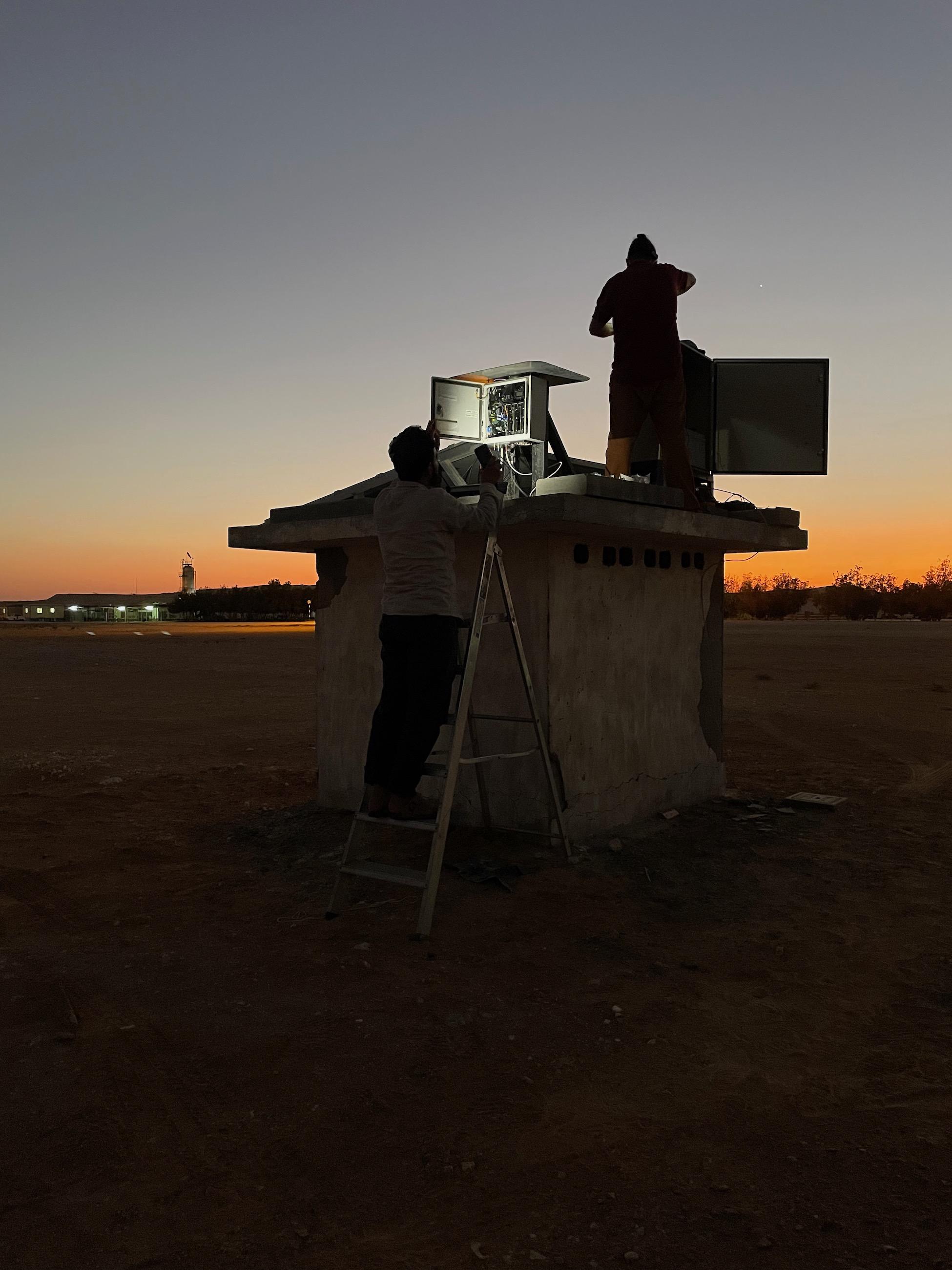
Small finds with great significance!
Freshly fallen meteorites with associated camera observations are very important for science which is why the project "Quantifying the flux of small meteorites" is supported by the Swiss National Science Foundation (SNF). Camera-observed falls enable the calculation of orbits in space and establish a direct link between orbit and meteorite type. The now proven ability to find even small meteorites observed by cameras in Oman makes it possible to better narrow down the previously only approximately known frequency of small meteorite falls. Small meteorites are probably the most frequent, so they are important for calculating the total flux of meteorites to Earth. Moreover, observed falls provide the freshest meteorite material!
Contributions of the involved institutions:
- Ministry of Heritage and Tourism, Sultanate of Oman: Administrative lead of the meteorite project in Oman, maintenance of cameras
- Swiss institutions (Natural History Museum Bern, Natural History Museum Geneva, University of Bern): Scientific lead of the project, co-maintenance of cameras. The Swiss group is supported by a grant of the Swiss National Science Foundation.
- Curtin University, Perth, Australia: Supply of all-sky cameras, fireball data treatment
- Institute of Physics, Albert-Ludwigs-University, Freiburg, Germany: Operation of the GeMSE underground gamma spectrometer, support with data analysis.
